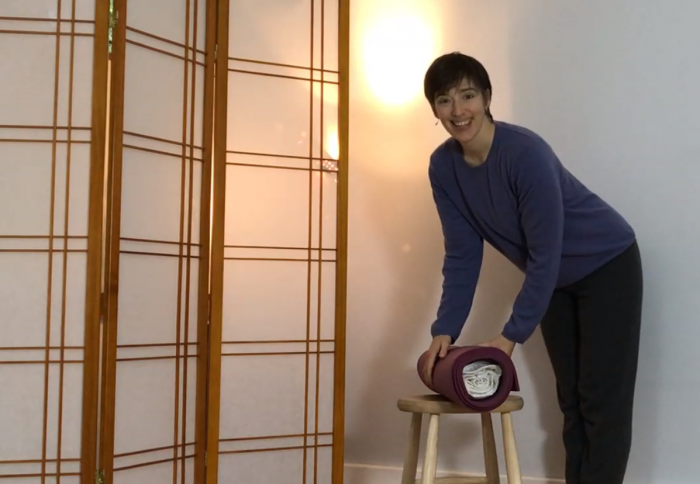Creating flexibility can be more complex—and simpler—than you might think.
If you have one tight muscle, the likelihood is you feel tight elsewhere. And, at stressful times, that sense of stiffness and discomfort can be even worse. After all, we are systems. What effects one part of us, effects our whole being.
Tightness might be from stress. It might be postural, emotional. It might be old habits. It might not have much to do with that one, worst, tight, spot.
For example, I’ve had students come to class with tight hamstrings, yet find that after doing some slow, gentle, rounding and arching of their backs, they no longer experience the same tightness. What happened? Did they change the length of their hamstrings? They have the same muscles they had 5 minutes before—so what happened?
In doing gentle, whole body, movement, their whole system profoundly changed.
When done slowly, and with awareness, movements like cat/cow are integrative. The gentle rocking of the pelvis can help ease back pain, back tension. The gentle lengthening and shortening of hamstrings and psoas help to remind us find neutral. We feel the difference between extending and flexing, and the calming effect is global—shoulders, ribs, spine are all engaged in this meditative movement. Everything Changes.
Those changes effect our resting tone. They help turn down that tightness. They help orient away from specific problems, and towards global wellness. Those changes help us move out of habitual attitudes and into present time with acceptance and kindness.
This is one of the reasons that meditative movement and restorative postures are so profound. They actually change us at a systemic level, calming the stress responses, and returning us to a state of homeostasis—balance, emotionally and physically.
Want to find this for yourself, but having trouble making space to do this on your own?
- Take a class with a Restorative Yoga teacher, online. Learning to soften throughout your entire self (mind and body) can change the resting tone of your musculature. The rewards include stress reduction, gains in flexibility and strength that might surprise you. Many of my students are weight-lifters or athletes who have found the practice of restorative yoga supports their activity by helping them recover, increasing their self-awareness, and increasing their ability to manage physical and emotional stress.
- Take a class from a Feldenkrais® Practitioner. These movement-based, and often meditative classes facilitate development of strength, coordination, and effective function of your whole system. When you have habits of tightness, of pain, or of discomfort, an Awareness Through Movement® class can help you have a completely different orientation towards movement, and towards yourself. This change in orientation can affect everything you do: how you move, and even how you relate to others in your life.
- Try this 10 minute video: a seated exploration of cat/cow. Hint: less is more. Work small, be skeptical, and see what happens. Make a roller using a yoga mat rolled around a towel. This type of roller is soft, and provides a little more stability than a foam roller. Bare feet provide traction. (If you have balance issues, ask your doctor if this is a good fit for you.)
- Join my email list for more free videos, sliding-scale classes, and information about incorporating profound movement practices into your daily life or follow me on Instagram for all I do.
With kindness, Heather Danso, GCFP












Read 0 comments and reply